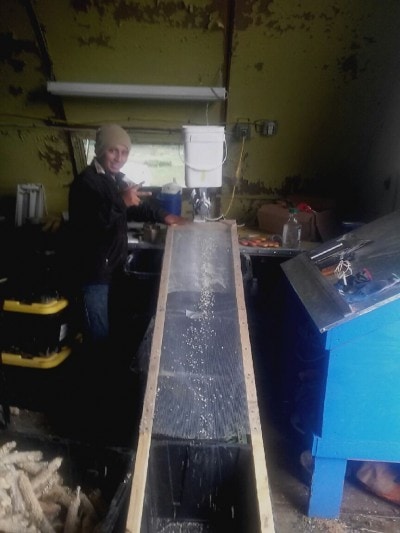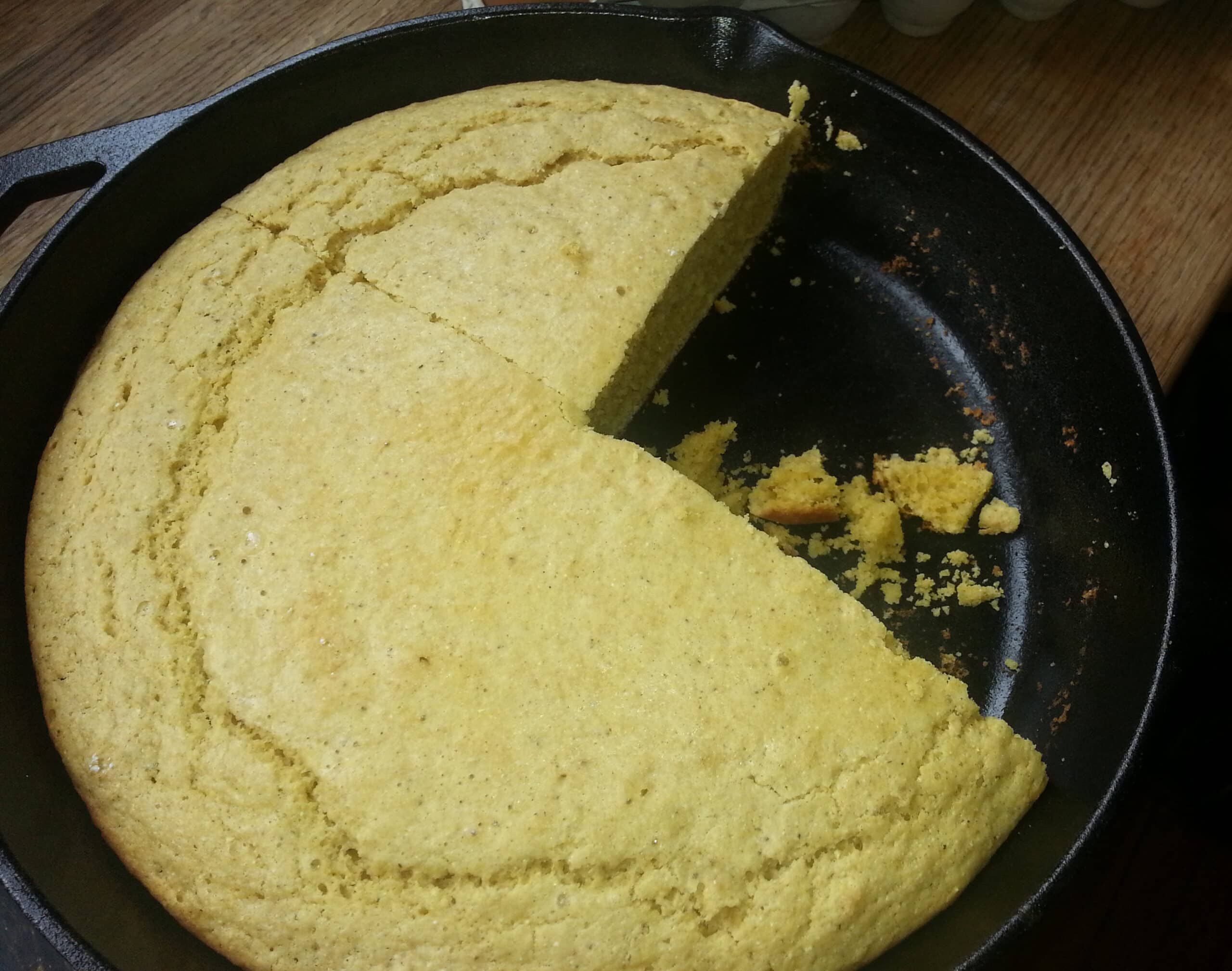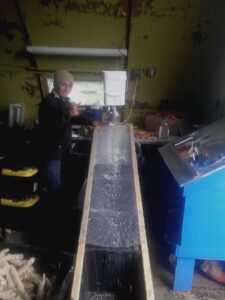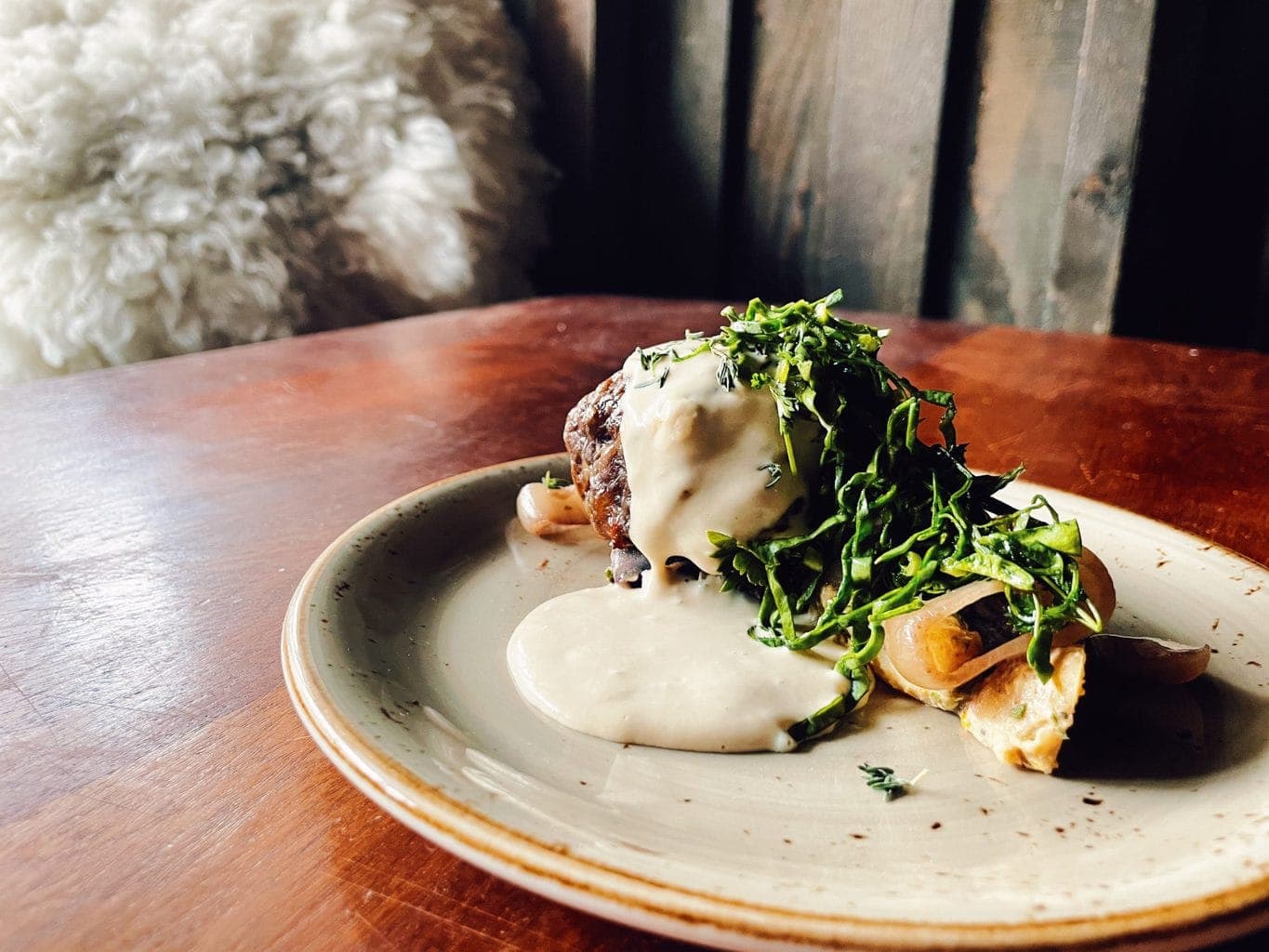

Every year, the Black Cat Farm tries a few new crops on smaller amounts of land than they use for production crops. If the crops grow well and taste good, Eric and Jill often grow them again.
One of last year’s Black Cat Farm experiments was to grow Boone County white corn for cornmeal, which can be used for polenta. Sometimes, the experiments are unsuccessful, but the corn grew tall, yielded well, and the small amounts of cornmeal that Eric and the Black Cat Bistro staff was able to mill made terrific polenta.
Now that Eric has been able to mill a lot more cornmeal, he says that it makes the best cornbread ever and has provided a cornbread recipe. The Black Cat farm booth at the Boulder Farmers’ Market is for a limited time selling his cornmeal, so you can try it with your own cornmeal or use his fresh-milled cornmeal and see if you agree with him.
Cornmeal milling

Most of the dried corn has been stored on the cob until recently. With the prolonged rainy season, there has finally been enough time for Eric and the Black Cat farm workers to work on his corn milling process. To start, they borrowed an antique International Harvester corn sheller from their friends and neighbors at Frog belly Farm and shelled 400 pounds of corn.
After much tinkering, Eric jury-rigged a corn mill and screening machine, which he calls, “the epitome of farm boy ingenuity!” The grinder is a modified older Kitchen-Aid mixer. Following is his explanation of the corn mill and screening machine.
“Here we’ve modified a grinder by first adding a large hopper. Next, with some judicious cuts of a hand grinder and some baling twine, we increased the grinding capacity. Lastly, we built a custom screener to sort and clean the ground corn. In theory, we’ll be able to load the hopper with 4 gallons of our delicious Boones County White corn and mill it in an hour.”
The mill and screening machine work automatically and do not need tending. The screening machine consists of two layers of metal mesh, a shorter fine layer on top with a plastic bucket underneath it and a longer coarse layer under which are more plastic bins. After the corn mill grinds the corn, gravity and the vigorous vibration of the grinder moves it to the screening machine. The fine mesh sifts the flour into the first bin. The coarse mesh captures and separates the remainder into grits and corn bran and germ. The bran and germ are used to feed the pigs,chickens, and other fowl, which is the only grain that the farm feeds them. Eric says they use the shucked cobs for camp fires.
Eric says that if the mill is continuously refilled with corn kernels, it and the screening machine can fill a 25-pound bucket with cornmeal in three hours. If you make polenta with this cornmeal, the proportion to use is 1 part cornmeal to 1 part water with salt to taste.
Eric’s unfussy cornbread
Dry ingredients
2 cups cornmeal
2 cups all-purpose flour
4 teaspoons baking powder
1/4 cup sugar or other sweetener (for example, honey, maple syrup, sorghum syrup)
2 teaspoons salt
Wet ingredients
4 eggs, beaten well
1/4 cup neutral-tasting oil (for example, grape seed or safflower)
2 cups milk or other dairy (for example, half-and-half, cream, buttermilk, creme fraiche)
Note: Eric says that you can use whatever leftover dairy that you have in the house
1. Preheat the oven to 350 degrees.
2. Grease a cast iron skillet or baking pan for the cornbread.
3. In a bowl, combine and thoroughly mix the dry ingredients.
4. In another bowl, successively combine and thoroughly mix the wet ingredients.
5. In three or four batches, fold the dry mix into the wet mix, being carefully to work the batter as little as possible, barely incorporating the dry mix into the wet one.
6. Pour the batter into the cast iron skillet or baking pan and place the skillet or baking pan in the oven.
7. When your kitchen smells like cornbread (12 to 25 minutes), remove the cornbread from the oven. Stick a tooth pick in the middle of the cornbread, halfway down. If the toothpick is clean when retrieved from the cornbread, it is finished. If some batter clings to it, return the skillet or pan to the oven, wait five minutes and try again.
